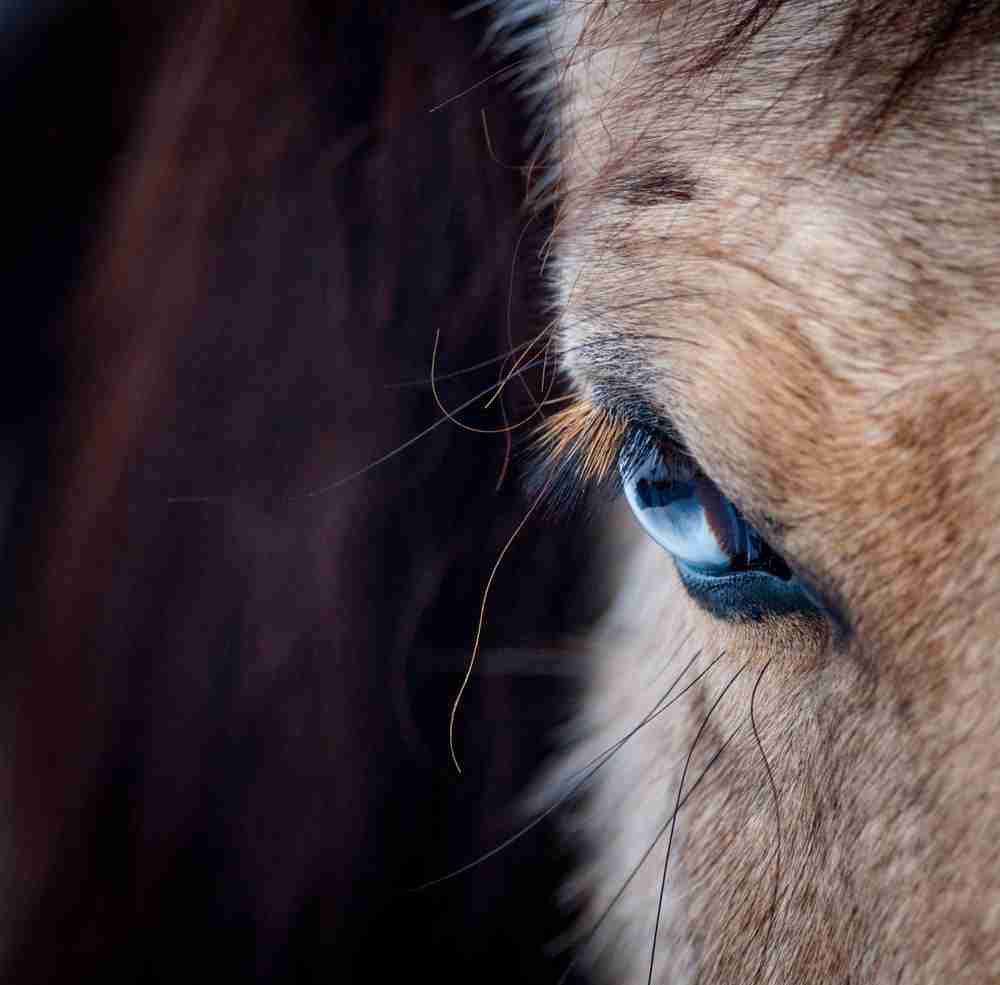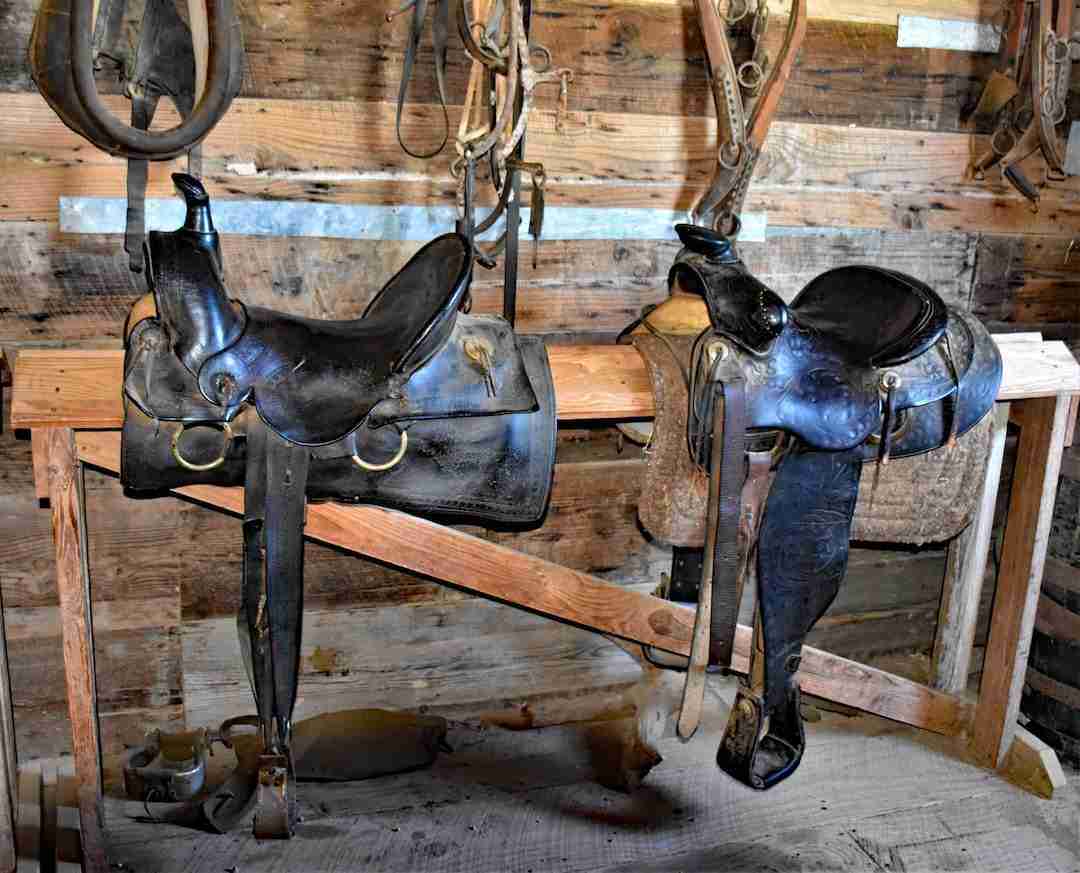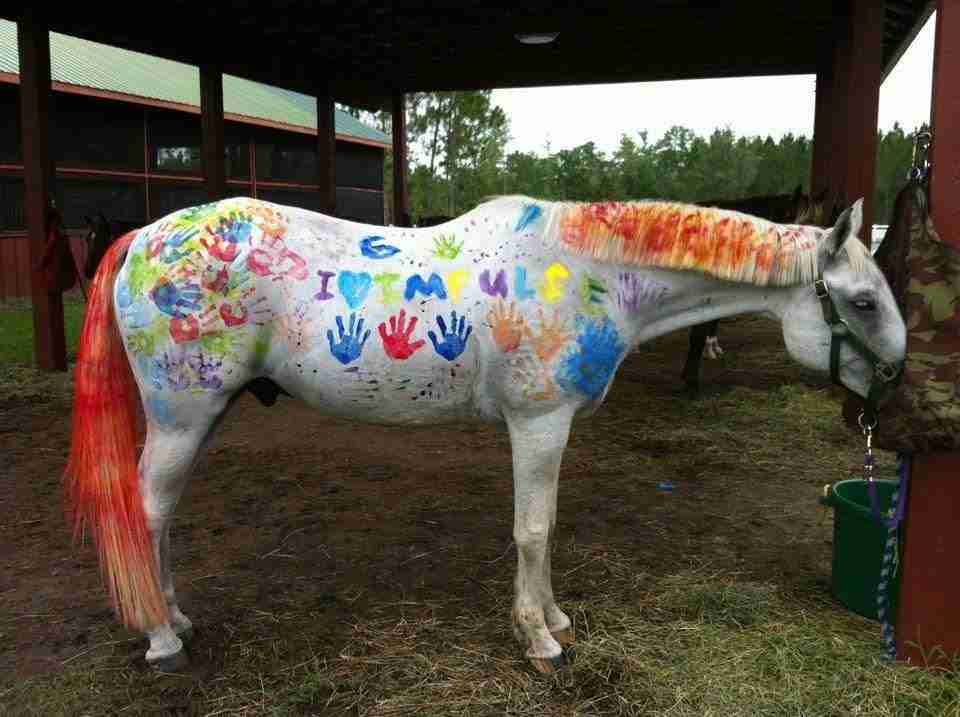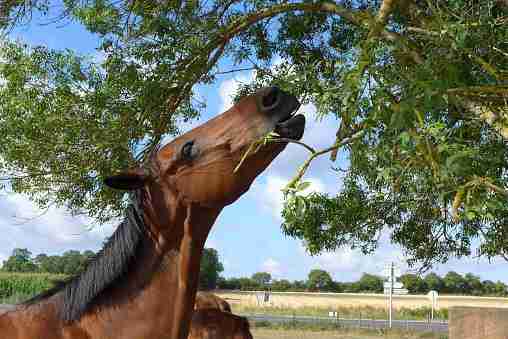Blue-eyed horses are called a lot of things, from “spooky eyes,” “moon-eyed,” and “glass-eyed.” Some cowboys will avoid a horse with blue eyes, claiming it’s “uncontrollable,” mainly due to superstition about this occurrence in horses. Other horse lovers believe it’s a sign of wisdom. What are the breeds of horses with blue eyes?
Breeds Of Horses With Blue Eyes, Include The Following:
- Tennessee Walking Horse
- American Paint Horse
- Appaloosa
- American Quarter Horse
- Akhal-Teke
- Gypsy Vanner
- Thoroughbred
- Saddlebred
- Arabians
- Draft Horses
- Miniature Horses
- Shetland Pony
Blue eyes seem more frequent in certain breeds but can occur in almost any horse breed.
The genetics that plays a part in creating blue eyes in horses isn’t fully understood, yet most breeds have registered a horse with blue eyes in the past. Horses with blue eyes may not be a regular occurrence, but they exist. Even breeders struggle to consistently breed horses with blue eyes, as the science behind it isn’t straightforward.

Breeds Of Horses With Blue Eyes
The Blue Eyed Horse Association (BEHA) is a horse registry where owners of blue-eyed horses can register their horses. The non-profit corporation aims to study, provide education, and track the blue-eyed horse.
Since its inception in winter 2005, over 150 horses have been registered with BEHA. “The presence of white blazes (on the face) is the one consistency we’re noticing with non-dilute blue-eyed horses,” adds Director Cherie Lones, before adding, “There’s a lot of mystery behind blue eyes in horses.”
According to their registry, the following breeds have produced horses with blue eyes:
- Tennessee Walking Horse
- American Paint Horse
- Appaloosa
- American Quarter Horse
- Akhal-Teke
- Gypsy Vanner
- Thoroughbred
- Saddlebred
- Arabians
- Draft Horses
- Miniature Horses
- Shetland Pony
The breed of horse that most often produces blue-eyed horses are the following:
- Tennessee Walking Horse
- American Paint Horse
- American Quarter Horse
- Appaloosa
- Akhal-Teke
- Gypsy Vanner
- Miniature Horse
Why Do Some Horses Have Blue Eyes?
When a horse has blue eyes, it simply indicates that the pigment of the iris is different. The pale color is caused by a lack of melanin in the iris of the blue-eyed horse. Unlike humans, who have a wide range of color options in their irises, horses are generally born with either brown or blue eyes.
The color reflected by the iris is caused by pigmentation, specifically melanin patterning. The pigment is a material that reflects specific wavelengths of light and displays color. Melanin is a pigment that gives eyes and skin color.
When the pigment is at the back of the eye only, the light scatters, making the eye blue instead of dark. The more melanin found in front of the eye, the darker the eye will appear.
Though uncommon, some horses display a mixture of both hues in one eye, known as “heterochromia iridis.” There’s no sinister reason why a horse is born with blue eyes, as every horse breed is capable of producing blue-eyed offspring.

Does Coat Color Affect The Eye Color Of A Horse?
Horses with white markings or diluted coat colors (cream or white), like cremellos and perlinos, are most likely to generate foul with blue eyes. The cream gene that causes these coat hues also causes the eyes to be less pigmented and formed with less melanin, making them appear blue.
Horses with light-colored coats, mainly cream or white, who have 2 cream genes, frequently have blue-eyed babies.
Double-Dilutes Always Have Blue Eyes
The color of a horse’s coat plays the biggest part in whether or not it will be born with blue eyes. Horses with a brown, bay, or chestnut base color diluted twice by the “cream” gene will always have blue-colored eyes.
Horses with two creme gene copies are called double-dilutes, blue-eyed creams, like cremello, perlino, and smoky cream horses.
Single-Dilutes With White Markings Can Have Blue Eyes
Horses with one creme gene are called single-dilutes and typically will have dark-brown eyes, but can also be born with blue eyes in the case of the horse having white markings. Blue eyes are rarely found in single-dilutes with base colors such as chestnut, bay, or black.
It’s rare but not impossible for these palominos, buckskins, or smoky black horses to have blue eyes.
Horses with white spotting (classified as overo) often have blue eyes. Similar to the white regions of the horse’s skin, the eyes also lack color-giving melanin. The American Paint Horse Association acknowledges that overo’s eyes are predominantly blue.
Other Articles You Maybe Interested In
What Is A Grade Horse?
Why Horses Show Their Teeth
What Are Ergots And Chestnuts On Horses?
What Is A Grulla Quarter Horse?
Who Is The Boss Mare And What She Means To The Herd
Champagne Horses Are Born With Blue Eyes
Champagne horses possess at least one copy of the dominant Champagne allele (color dilution gene), influencing the coat and eye color. When a champagne horse is born, the eyes will be whitish or bright blue, often turning into a hazel or amber as the fowl matures.
Albino Horses Can Have Blue Eyes
The Albino horse, though not exactly a breed, is well-known for its white coat and pinkish flesh. Any horse with this unique white hue, regardless of lineage, ancestry, or size, can be described as an “albino.”
The Albino horse does not have albinism syndrome (an animal suffering from insufficient melanin production); it’s simply a white horse, although they appear to be an albino.
The Albino horse exhibits the traits of an albino animal, and they are not real “albinos.” The most noticeable difference is its pink skin shining through its immaculate white coat. Furthermore, its eyes are invariably dark in color (either blue, brown, or black).
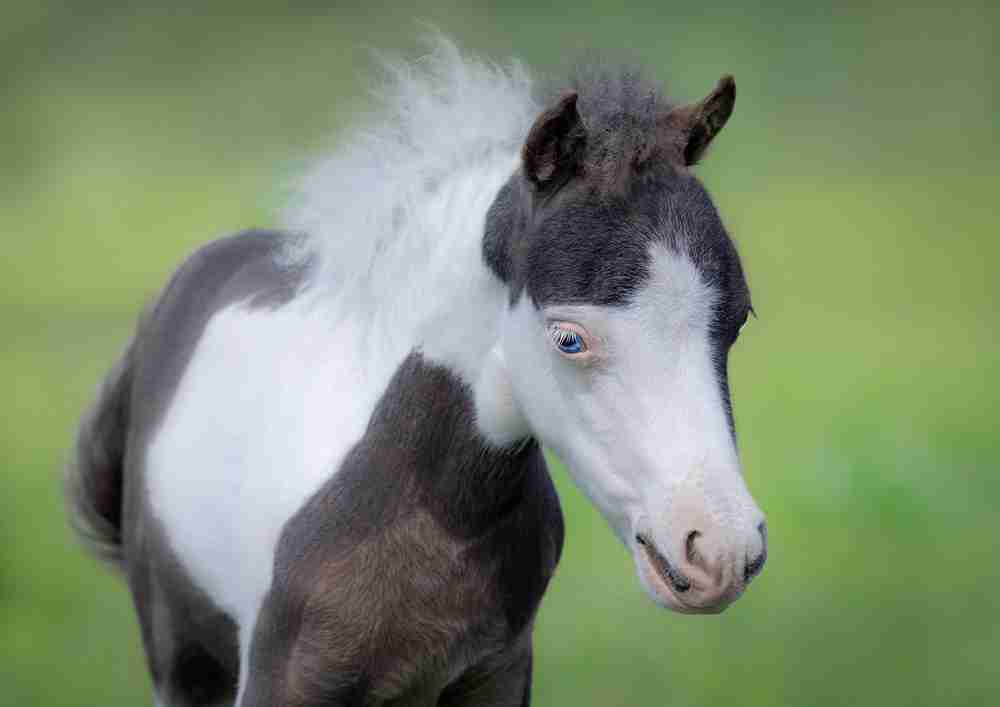
Can Any Horse Breed Produce Horses With Blue Eyes?
According to Dr. Philip Sponenberg, DVM, Ph.D., who’s an equine geneticist and a horse coat-color specialist (Virginia-Maryland Regional School of Veterinary Medicine), the little we know about the inheritance of blue eyes in horses can be summed up in the following way:
- You expect to see blue eyes in cremellos
- You can find blue eyes in perlinos
- You can expect to see blue eyes on horses with white spotting
- You can spot blue eyes on horses with dark coats
Dr. Sponenberg is echoing what most horse lovers know already. Any horse breed can produce fowl with blue eyes, depending on the color genetics of the dam and the sire and the lack of pigmentation caused by the cream genes.
The first dilute gene, which works like the first coat of whitewash on a dark wall, lightens the horse’s red hairs from the chestnut, bay, or black to palomino, buckskin, or smokey black.
The second dilute gene acts like a second coat of whitewash, causing the horse’s skin coloring and coat to become lighter. The combination of two dilute genes also affects the pigmentation of the horse’s eyes, causing both irises of a horse to appear blue.
“The melanin simply isn’t there,” Sponenberg explains, “so the eyes seem blue instead of the regular brown.”
On horses with distinctive overo patterns or different overo combinations, Sponenberg explains, “The splashes, frames, and sometime even sabinos will have blue eyes.” Sabino is an overo-like jagged white patch found on the bottom half of a horse’s body. Arabians and Thoroughbreds with blue eyes can result from sabino coloring.
What Does It Mean When A Horse’s Eye Turns Cloudy Or White?
Suppose your horse was born with dark eyes and starts to look cloudy, or your horse’s blue eyes start to look white; it may indicate a health condition that needs to be checked out. When a horse’s eyes begin to look cloudy or lose brown pigmentation, it can be due to inflammation of the cornea or the dreaded cataract.
Cataracts cause a cloudy coloring on the lens inside the horse’s eye. Some horses have cataracts from birth, while others get them due to injury or illness. Cornea inflammation is caused by increased pressure within the eye or a cornea ulcer typically caused by eye trauma.
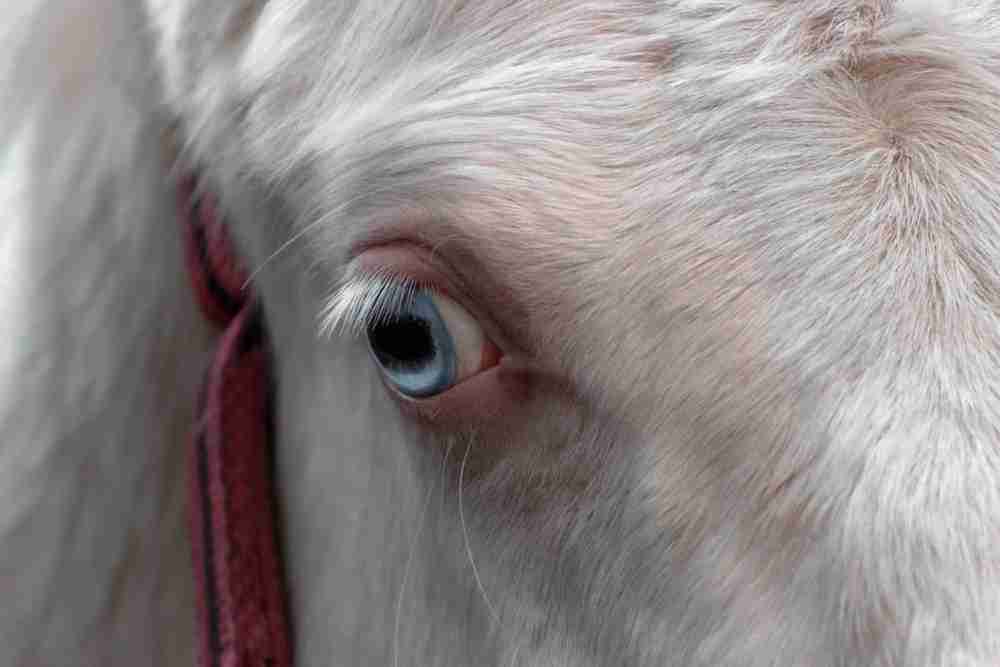
Are Horses With Blue Eyes More Susceptible To Disease?
Blue-eyed horses are no more prone than those with brown eyes to suffering from eye illness, according to a study done in 2014. However, horses with blue irises usually have pink skin around the eyelids rather than black, which is most likely the origin of the misconception that blue eyes are light sensitive.
Pink skin lacks the preventive pigment melanin. Therefore, any patches of pink skin on a horse, especially the eyelids, are much more susceptible to harmful sunburns and are more prone to skin cancer than black skin (referred to as squamous cell carcinoma). Applying sunscreen and using fly masks will help reduce this cancer risk.
Do Horses With Blue Eyes Struggle To See?
Blue-eyed horses have the same eyesight as brown-eyed horses. So, while their blue iris isn’t any more sensitive to light as a horse with brown eyes, the skin around the eye (if it’s pink) can be more sensitive to UV rays.
Conclusion
Horses with blue eyes are rare, the occurrence makes for a beautiful horse, and it doesn’t mean that something is wrong with the horse. Blue eyes can be found in any horse breed, although certain breeds produce more blue-eyed horses more often. The dilution gene also plays a big role in whether a horse will have blue eyes, apart from genetics.

